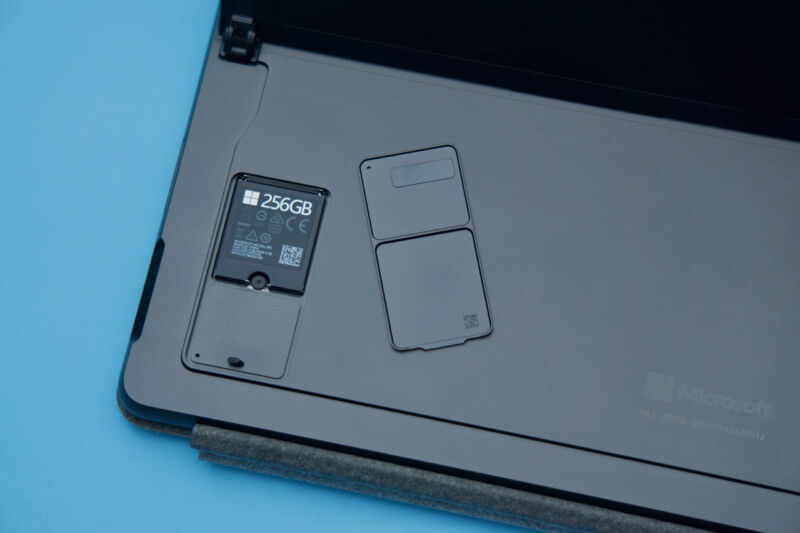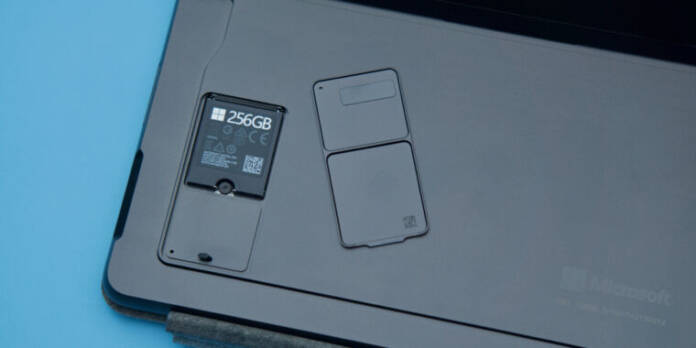
Andrew Cunningham
Microsoft offers first-party service manuals for several generations’ worth of Surface hardware, in keeping with a commitment to improve its repairability and sustainability efforts. Today, Microsoft is taking the next step, listing dozens of replacement parts for Surface tablets, laptops, and all-in-ones on the Microsoft Store.
The screens, kickstands, batteries, keyboards, camera modules, and other odds and ends are available for the Surface Pro 8, 9, and X; Surface Laptops 2 through 5 plus the Go 2 and the Studio; and the Studio and Studio 2+ all-in-one desktops. Most of the major components are pretty expensive—the display for a Surface Studio 2+ is $1,750 all by itself—but they’re cheaper than buying a new device, you won’t have to pay for labor costs, and you can be sure you’re getting genuine first-party components.
“When purchasing a replacement component, you will receive the part and relevant collateral components (such as screws if applicable),” wrote Microsoft VP Tim McGuiggan. “Tools needed for the repair are sold separately through iFixit. It is essential to follow the instructions in the applicable Microsoft Service Guide or article.”
Microsoft is also selling some first-party Surface SSD upgrades for anyone who bought a 128GB or 256GB drive and regretted it later. But the way they’re listed is a bit odd—there are three separate listings for the Surface Pro 8, Surface Pro 9, and Surface Pro X, plus more for various generations of Surface Laptop and Surface Laptop Go. And though all of the drives are physically identical, the ones for the more recent Surface devices are a bit more expensive than the others in some capacities.
The drives may differ in subtle ways that the listings don’t mention—differing PCI Express configurations, maybe, or just making sure that drives are replaced with identical models for support purposes. It’s worth noting that there are mixed reviews for third-party M.2 2230 drives like the Sabrent Rocket in Surface devices; many users report that they work just fine, and others report instability, overheating, and sleep issues. Though Microsoft’s drives cost more per gigabyte than Sabrent’s, and none of them go up to 2TB, it’s nice to have a first-party option available to minimize these kinds of issues.
The first few generations of Surface devices were infamously difficult to repair, with proprietary parts and glued-together frames that earned the company some very low scores on iFixit’s repairability scale. More recent versions have been better, partly because of pressure from Microsoft shareholders to improve repairability and sustainability, and partly because a handful of countries and US states are beginning to propose and pass right-to-repair laws that would mandate some of these changes anyway.
Parts will initially be available in the US, Canada, and France, with “updates on additional markets” coming “in the future.”













